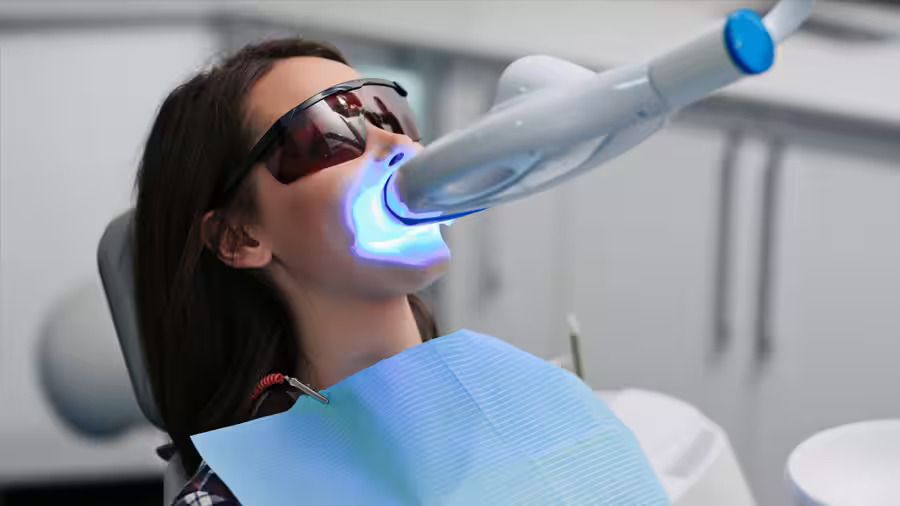When it comes to tooth pain and discomfort, one of the most common treatments that comes to mind is root canal treatment. But how do you know if you need a root canal? Understanding the symptoms and signs associated with this dental procedure can help you seek treatment promptly, potentially saving your natural tooth.
Signs You May Need a Root Canal
Several warning signs can indicate that you may need a root canal. Persistent tooth pain is one of the most common signs. This pain can range from a dull ache to a severe toothache, especially when chewing or biting. If you are experiencing sensitivity to hot or cold temperatures that lingers after the temperature stimulus is removed, this could also be a sign that you require root canal treatment.
Swollen gums are another telltale sign. Swelling can range from barely noticeable to severe enough to cause facial swelling. In some cases, an unpleasant taste in your mouth may accompany the swelling.
Tooth discoloration is another indication of a potential need for a root canal. A discolored tooth often signifies damaged internal tissue or infected tooth pulp within the tooth3.
Chipped or cracked teeth can also lead to the need for root canal therapy. A chip or crack can expose the tooth's nerves and blood vessels, leading to infection and consequent tooth pain.
What Happens During a Root Canal Procedure?
A root canal procedure involves removing the infected or inflamed pulp (the tooth's internal tissue comprising blood vessels, connective tissue, and nerve endings) from inside your tooth to prevent further infection and save the natural tooth5. After the pulp is removed, the dentist cleans and disinfects the inside of the tooth, then fills and seals it.
Root canal therapy is usually performed under local anesthesia, making it a relatively comfortable dental treatment. Despite common misconceptions, modern root canal treatment is no more uncomfortable than having a filling placed.
When to Seek Treatment
If you are experiencing any of the symptoms mentioned above, it's crucial to seek treatment promptly. Ignoring the signs can lead to severe infection, sinus infection, or an abscess where pus collects inside the tooth, causing severe tooth decay.
A general dentist can diagnose the need for a root canal during a routine dental check-up through a thorough examination and X-rays. If your dentist suspects you may need a root canal, they will refer you to an endodontist, a specialist in diagnosing and treating tooth pain and performing root canal treatment.
Prevention is Better Than Cure
While root canal treatment is an effective way to save an infected tooth, prevention is always better than cure. Regular dental check-ups, and good oral hygiene, including brushing with fluoride toothpaste, flossing daily, and avoiding sugary foods, can help prevent tooth decay and the need for root canals.


How do you determine if you need a root canal?
A root canal is usually recommended when a tooth has been damaged or infected due to decay, trauma, or other causes. Your dentist will examine the tooth and take X-rays to determine if a root canal is necessary. If the tooth is severely decayed or infected, a root canal may be the only way to save the tooth. Your dentist may also recommend a root canal if you have severe pain or sensitivity in the affected tooth.
What is the rate of root canals in the USA?
The American Association of Endodontists estimates that approximately 15 million root canals are performed in the United States each year. This number has been steadily increasing over the past decade due to advances in technology and the increased availability of root canal treatments.
Is a root canal necessary if there is no infection?
No, a root canal is not always necessary if there is no infection. In some cases, a filling may be enough to repair the damage to the tooth. However, if the damage is more extensive, a root canal may be necessary to prevent further damage and to protect the tooth from infection. Your dentist will be able to assess the damage and determine if root canal symptoms are the best course of action.
How do you know if you need a root canal x-ray?
A root canal x-ray is typically recommended if you are experiencing severe pain or sensitivity in a tooth, or if your dentist suspects that there may be an infection or decay in the root of the tooth. The x-ray will help your dentist determine the extent of the damage and whether a root canal is necessary. If a root canal is recommended, the X-ray will also help your dentist plan the best course of treatment.
How long do root canals last?
Root canals are an effective form of therapy used to treat dental injuries or diseases that affect the nerve of a tooth. Generally speaking, root canal treatments last for years, as long as you practice good oral hygiene and receive regular professional dental check-ups. While a root canal surgery can fail, this is usually due to an infection that was either overlooked during the initial treatment or has occurred since then.
When a patient undergoes a successful root canal treatment procedure, the removed tooth's hollow space is refilled with inert material and sealed with cement. The crown will be placed over the treated area later on during follow-up appointments. This means that once your root canal treatment has been completed, you can expect to have stable dentition in that area without any further intervention for several years before needing repair work done on it.
In most cases where no infection re-occurs or new cavities form around the treated area of teeth, research indicates that 80% of root canals remain sealed after 10 years, and 65% stay sealed after 15 years.* So when performed correctly by a qualified professional and paired with proper oral hygiene such as brushing twice daily and flossing once per day—root canals have shown impressive long-term retention rates in patients who received them!
How can you prevent a root canal?
Prevention is always the best medicine, and this also applies to root canals. First and foremost, it’s essential to maintain good oral hygiene habits including brushing twice daily with a fluoride toothpaste, flossing daily, using mouthwash when necessary, and visiting your dentist every 6 months for checkups to detect any dental problems before they become serious.
In addition to practicing good dental care habits, there are other steps you can take to prevent needing a root canal:
1) Limit consumption of sugary drinks and snacks as sugar causes bacteria in your mouth that leads to tooth decay and increases the risk of infection;
2) Wear an athletic mouthguard during contact sports or activities;
3) Avoid chewing on hard objects such as pens or pencils which can crack teeth;
4) If you grind your teeth while sleeping (bruxism), speak with your dentist about wearing a nightguard to protect the enamel from further wear. Lastly, taking measures now such as consuming antioxidants found in tea/berries/pineapple reportedly helps build strong enamel that could act as armor against future damage that may require a more extensive treatment like a root canal.

To sum up, persistent tooth pain, sensitivity to heat or cold, swollen gums, a discolored tooth, and a chipped or cracked tooth are some of the most common signs that you might need a root canal. If you experience any of these symptoms, seek dental care promptly. Remember, early detection and treatment are key to preserving your natural teeth and maintaining a healthy smile!












